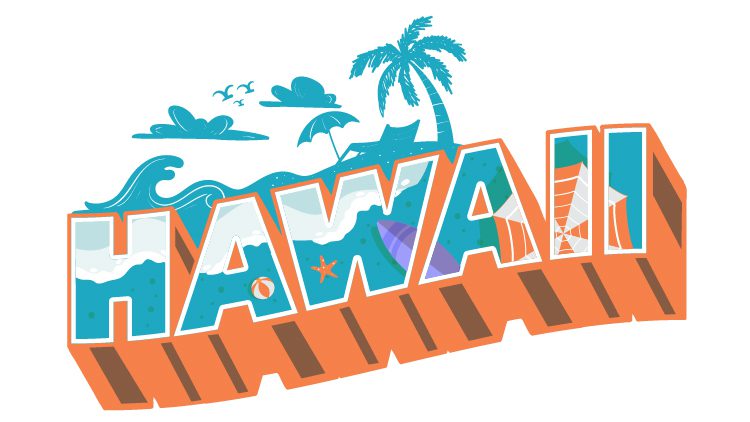
What makes a language endangered?
The issuing authority authenticates a certified copy of a birth certificate as a true and accurate copy of the original birth certificate. This document is often required for legal purposes, such as obtaining a passport, applying for government benefits, or getting married.
An endangered language is at risk of disappearing or becoming extinct. Many factors can contribute to a language becoming endangered, such as a lack of speakers, government policies that promote a dominant language, and social pressures to adopt a different language.
In the case of the Hawaiian language, also known as ʻŌlelo Hawaiʻi, the language has faced a long history of suppression and decline. The Hawaiian language is an indigenous language spoken by Native Hawaiians for over a thousand years. However, with the arrival of English-speaking missionaries in the early 1800s, the Hawaiian language was seen as inferior and was actively suppressed.
During the reign of the Hawaiian Queen, Liliʻuokalani, in the late 1800s, efforts were made to revive and promote the Hawaiian language and culture. However, the overthrow of the Hawaiian government in 1893 and the subsequent annexation by the United States led to further suppression of the Hawaiian language and culture.
By the 1980s, there were only a few hundred native Hawaiian speakers left, and the language was on the brink of extinction. However, efforts by community leaders like Larry Kimura and organizations like the Pūnana Leo and Kamehameha Schools led to a revival of the Hawaiian language and culture, known as the Hawaiian Renaissance.
Today, the Hawaiian language is alive, with thousands of speakers and efforts by the Hawaiian government and the Department of Education to promote and preserve the language. However, the language is still endangered, and continued efforts are needed to ensure its survival and growth. Keeping endangered languages is important for cultural diversity and the unique knowledge and perspectives that these languages offer.
What caused Hawaiian to become endangered?
One major factor that contributed to the decline of the Hawaiian language was the colonization of Hawaii by the United States in the late 1800s. As part of a larger effort to assimilate native Hawaiians, English was promoted as the language of education and governance, and Hawaiian was discouraged in schools. It was not until 1978 that Hawaiian was made the official language of Hawaii alongside English.
Another factor was the spread of diseases by Westerners, which greatly reduced the population of native Hawaiians. With fewer speakers of the language, the transmission of Hawaiian from one generation to the next was greatly hampered.
However, the Hawaiian language did not completely disappear. In the 1980s, a grassroots movement began with the establishment of Pūnana Leo, a network of Hawaiian language immersion schools. This helped revitalize interest in the language and has led to a resurgence in speakers.
Despite these efforts, the Hawaiian language remains endangered. According to UNESCO, there are only around 2,000 native speakers left, and many of them are elderly. Therefore, it is important to continue supporting initiatives to preserve the language, such as expanding access to Hawaiian language education and documentation of the language through research and literature.
The History of the Hawaiian Language
The Hawaiian language, or ʻŌlelo Hawaiʻi, has a rich and unique history. Before European contact, Hawaiian was the Native Language of the Hawaiian people, used in all aspects of life, from communication to religious ceremonies.
In the 19th century, American and European settlers brought the English Language to Hawaii, quickly becoming the dominant language in kamehameha schools, government, and business. The English language, coupled with the suppression of Native Hawaiian culture and language, led to a rapid decline in the use of Hawaiian.
By the 1980s, Hawaiian was on the brink of extinction, with only a few hundred fluent speakers remaining. However, a movement led by Native Hawaiians and activists to revive the language emerged, leading to Pūnana Leo, a Hawaiian language immersion school for young children.
This movement was also supported by a belief in Divine Intervention, with many Native Hawaiians seeing the revival of the language as part of a larger effort to heal and reconnect with their cultural identity and heritage.
Today, while Hawaiian remains endangered, its use and popularity have resurgent, with over 18,000 people in Hawaii claiming it as their first language. The Hawaiian language is an important part of the state's identity and cultural heritage, and its preservation is crucial in maintaining the unique character of the Hawaiian Islands. A belief in Divine Intervention also supported this moment.
How many native Hawaiian speakers are there today?
Before delving into the current state of the Hawaiian language, it's essential to understand the history and factors that led to its decline. However, in answering how many native Hawaiian speakers there are today, it's important to note that the number is continually changing.
As of the last U.S. census, there were approximately 24,000 Native Hawaiian speakers. However, this number does not represent the number of fluent speakers. The number of fluent speakers is much lower than those who speak only Hawaiian words or phrases.
It's worth noting that many Native Hawaiians have expressed that it's not necessarily the number of speakers that is the most important indicator of the health of the language. The revitalization of the language is also about the perpetuation of the Hawaiian culture and the way of life that the language embodies.
One significant effort that has helped increase the number of Native Hawaiian speakers is the establishment of Pūnana Leo preschools. These private schools teach Hawaiian and have played an essential role in revitalizing the language. As a result of these schools and other efforts, there is a growing number of younger people who speak Hawaiian fluently.
Despite the efforts to revive the language, the number of fluent speakers is still relatively small. However, there is hope for the future as the community prioritizes language preservation and revitalization.
In the next section of this blog post, we'll look at the decline and revival of the Hawaiian language.
Decline and revival of the Hawaiian language
During the late 1800s and early 1900s, the Hawaiian language experienced a significant decline due to the influx of foreign settlers and missionaries. The introduction of Western education systems and policies prohibited the use of Hawaiian language in schools and other public settings, which led to a decrease in the number of fluent speakers. By the 1970s, it was estimated that less than 2,000 native Hawaiians spoke the language fluently, making it endangered.
However, in the 1980s, a group of concerned parents and educators founded Pūnana Leo, a network of Hawaiian-language immersion schools. These schools sought to create a space where Hawaiian children could learn the language and culture of their ancestors while receiving a Western education. Pūnana Leo played a vital role in revitalizing the Hawaiian language by allowing young children to become fluent speakers and fostering a sense of cultural pride and identity. Department of Education to promote and preserve the language.
In addition to Pūnana Leo, other efforts to revive the language included publishing Hawaiian-language newspapers, radio broadcasts, and language immersion programs for adults. These efforts contributed to a renewed interest in the language, and today there are around 18,000 native Hawaiian speakers, with more than 2,000 fluent speakers under 18.
While the decline of the Hawaiian language was a significant setback, its revival serves as an inspiring example of the power of language preservation. The work of Pūnana Leo and other advocates of the Hawaiian language has ensured that it remains a vital part of Hawaii's cultural fabric and has helped protect it from becoming lost forever.
The current state of the Hawaiian language: Must know
Currently, the Hawaiian language is classified as "severely endangered" by UNESCO. This is because the number of native speakers of the Hawaiian language has declined drastically over the years. In fact, by the early 1980s, there were fewer than 50 native speakers of the language remaining. This resulted from the suppression of the Hawaiian language that began in the late 1800s, as English was imposed as the official language of Hawaii.
However, in recent years, there has been a revival of the Hawaiian language. One major factor in this revival has been the establishment of Pūnana Leo, or "Language Nest" schools, where children are immersed in the Hawaiian language from a very young age. These schools were established in the 1980s and have since expanded to numerous locations throughout Hawaii.
In addition to the Pūnana Leo schools, there are also efforts to teach the Hawaiian language in public schools and to offer courses at the university level. Furthermore, numerous resources are available for people to learn the Hawaiian language online, including language apps and websites.
Despite these efforts, however, the number of fluent speakers of the Hawaiian language is still quite low. According to a 2016 survey, there are an estimated 2,000 fluent speakers of the language, with another 18,000 people who have some knowledge of the language but are not yet fluent.
While the revival of the Hawaiian language is certainly encouraging, it is clear that there is still a long way to go in terms of preserving and revitalizing this important language. Nevertheless, the work being done by groups such as the Pūnana Leo schools is vital in ensuring that the Hawaiian language continues to be spoken and understood for generations.
Efforts to preserve the Hawaiian language
One of the main organizations responsible for preserving the Hawaiian language is Pūnana Leo. Pūnana Leo, which means "language nest," is a Hawaiian language immersion preschool program. It was established in the 1980s in response to the decline of the Hawaiian language and has since become a model for language revitalization efforts.
Through Pūnana Leo, children learn Hawaiian as their first language. They are fully immersed in the language and culture, which allows them to develop fluency and a deep understanding of their heritage. The program has been successful in not only preserving the language but also promoting Hawaiian culture and values.
In addition to Pūnana Leo, many other efforts exist to preserve the Hawaiian language. These include university language classes, community events, and language revitalization projects. Many of these efforts are led by Hawaiian language experts and community leaders passionate about preserving their language and culture.
Many speakers of the language are elderly, and few young people are fluent. This means that the language is likely to become extinct in the future.
Overall, efforts to preserve the Hawaiian language are essential to ensure the survival of this unique and valuable part of Hawaiian culture. Programs like Larry Kimura and Pūnana Leo are making a difference, but more work needs to be done to ensure that the language continues to be passed down to future generations.
Importance of preserving endangered languages
The preservation of endangered languages is crucial for cultural diversity and understanding. Every language is a unique reflection of its culture; once a language is lost, a piece of that culture is lost forever. Preserving endangered languages is also vital for future generations to understand their heritage and cultural identity.
One excellent example of efforts to preserve an endangered language is the Pūnana Leo movement. The Pūnana Leo is a network of preschools in Hawaii that use Hawaiian as their primary language of instruction. They aim to educate young children in Hawaiian, ensuring that the language is passed on to future generations.
Furthermore, preserving endangered languages has many other benefits, such as increased cognitive abilities and creativity. Studies have shown that bilingual or multilingual individuals are better at problem-solving, have improved memory and attention skills, and even delay the onset of dementia. Therefore, preserving endangered languages can have far-reaching positive effects on individuals and societies.
Frequently Asked Questions
There are numerous initiatives aimed at protecting and restoring the Hawaiian language. These include Hawaiian language immersion schools, language programs, and cultural organizations dedicated to language revitalization.
Hawaiian language immersion schools are available in Hawaii, where students receive instruction primarily in Hawaiian. Additionally, Hawaiian language courses are offered in some public and private schools.
Yes, non-native speakers can learn Hawaiian. Resources such as language courses, online materials, and dictionaries are available to support learning the language.
Various initiatives promote the use of Hawaiian in everyday life, including encouraging its usage in signage, media, arts, and cultural events. These efforts aim to normalize the presence of Hawaiian in the community.
Individuals can support the conservation of the Hawaiian language by learning and using Hawaiian words and phrases, attending cultural events, supporting Hawaiian language programs and organizations, and respecting the language and its speakers.
https://www.universal-translation-services.com/hawaiian-an-endangered-language-must-need-to-know/


Comments
Post a Comment